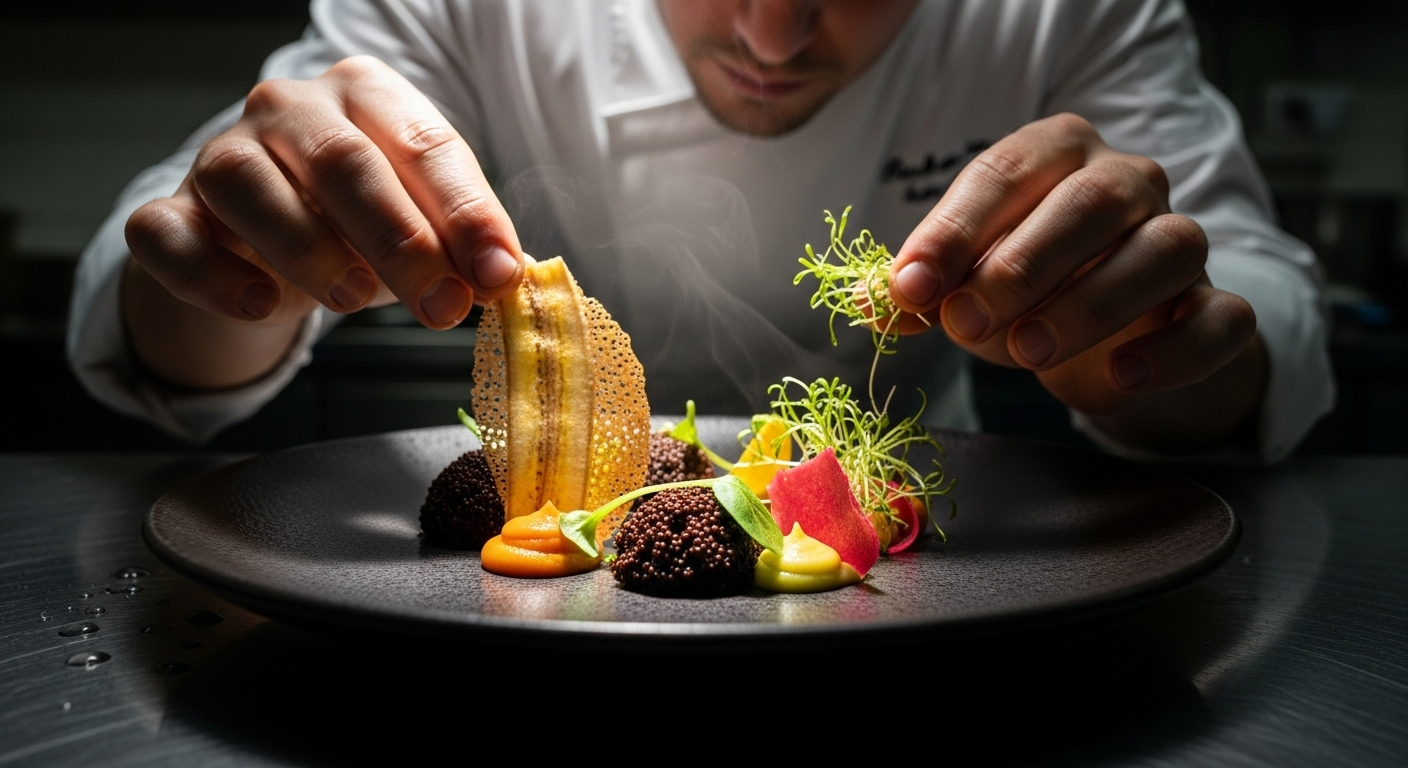Culinary Alchemy: Edible Flowers Revolutionize Fine Dining
Embark on a sensory journey where petals become plates and blooms transform into bites. Edible flowers are blossoming into the spotlight, adding vibrant hues, delicate flavors, and artistic flair to haute cuisine. This botanical revolution is not just about aesthetics; it's a fusion of nature, nutrition, and culinary innovation that's captivating chefs and diners alike.

Chefs are experimenting with techniques like crystallizing violets for dessert toppings, infusing roses into savory sauces, and even fermenting dandelions for probiotic-rich condiments. The versatility of edible flowers allows for creativity across all courses, from appetizers to desserts, and even in craft cocktails where floral ice cubes and garnishes are elevating the drinking experience to new heights.
Nutritional Bouquet: The Health Benefits of Blooms
Edible flowers aren’t just pretty face; they pack a nutritional punch that’s catching the attention of health-conscious diners. Many edible blooms are rich in antioxidants, vitamins, and minerals. For instance, calendula petals contain high levels of carotenoids, which are known for their anti-inflammatory properties. Borage flowers are a good source of gamma-linolenic acid, an omega-6 fatty acid with potential health benefits.
As the farm-to-table movement continues to grow, chefs are partnering with local growers to source fresh, organic edible flowers. This not only ensures the quality and safety of the blooms but also supports sustainable agriculture practices. The inclusion of edible flowers in dishes is becoming a symbol of freshness, purity, and connection to nature, appealing to diners seeking clean, wholesome ingredients.
Floral Fusion: Global Inspirations in Bloom
The edible flower trend is blossoming across cultures, drawing inspiration from traditional uses and creating new fusion cuisines. In Japan, chrysanthemum petals have long been used in teas and salads, while in Mexico, squash blossoms are a beloved ingredient in quesadillas and soups. Now, we’re seeing chefs combine these traditional applications with modern techniques and unexpected pairings.
Imagine a Middle Eastern-inspired dish where rosewater-infused lamb is served with a side of crispy fried zucchini blossoms stuffed with labneh and za’atar. Or picture a dessert that marries French patisserie with Asian flavors: a delicate jasmine macaron filled with lychee cream and garnished with candied osmanthus flowers. These cross-cultural creations are not only visually stunning but also offer a unique taste of global flavors in every bite.
The Art of Floral Plating: Visual Feast
The incorporation of edible flowers has elevated food presentation to an art form. Chefs are using petals, stems, and whole blooms to create edible landscapes on the plate. The natural shapes and colors of flowers lend themselves to creating visual masterpieces that engage diners before they even take a bite. This approach to plating taps into the growing trend of “camera cuisine,” where social media-worthy presentation is as important as taste.
Advanced plating techniques now include using edible flowers as natural food dyes, creating gradients of color across a dish, or using pressed flowers to create intricate patterns on pasta sheets or tuiles. Some chefs are even collaborating with artists to design plates that complement and showcase the floral elements of their dishes, turning each course into a multi-sensory experience that blurs the line between culinary and visual arts.
Sustainable Blooms: The Future of Floral Gastronomy
As the edible flower trend grows, so does the focus on sustainability. Forward-thinking chefs are exploring ways to use every part of the flower, from root to petal, in their creations. This zero-waste approach not only maximizes the value of these delicate ingredients but also aligns with the increasing consumer demand for environmentally conscious dining experiences.
Innovative techniques are emerging, such as fermenting flower petals to create unique condiments, drying stems for aromatic seasonings, and even using flower-based feed for livestock to infuse subtle floral notes into meats. Urban rooftop gardens dedicated to edible flowers are becoming more common in restaurants, ensuring a fresh supply while reducing transportation emissions. As this trend evolves, we can expect to see more integration of edible flowers into everyday cooking, making what was once a haute cuisine staple accessible to home cooks and food enthusiasts everywhere.
Blooming Tips for Floral Cuisine
• Always ensure flowers are specifically grown for culinary use to avoid pesticides
• Start with mild flavors like pansies or violas before exploring stronger tastes
• Pair flower flavors with complementary ingredients: lavender with lemon, nasturtium with cheese
• Use edible flowers immediately for best flavor and appearance
• Experiment with different textures: fresh petals in salads, dried flowers in teas, crystallized blooms on desserts
• Remember that not all flowers are edible; research before using any new variety
• Consider growing your own edible flower garden for a sustainable, year-round supply
In conclusion, the edible flower revolution is more than a passing trend; it’s a blossoming movement that’s redefining culinary boundaries. As chefs and diners alike embrace the beauty, flavors, and nutritional benefits of edible blooms, we’re witnessing the growth of a new gastronomic language. This floral fusion of art, science, and nature is creating dishes that not only tantalize the taste buds but also nourish the soul and inspire the imagination. The future of fine dining is in full bloom, and it’s a feast for all the senses.





